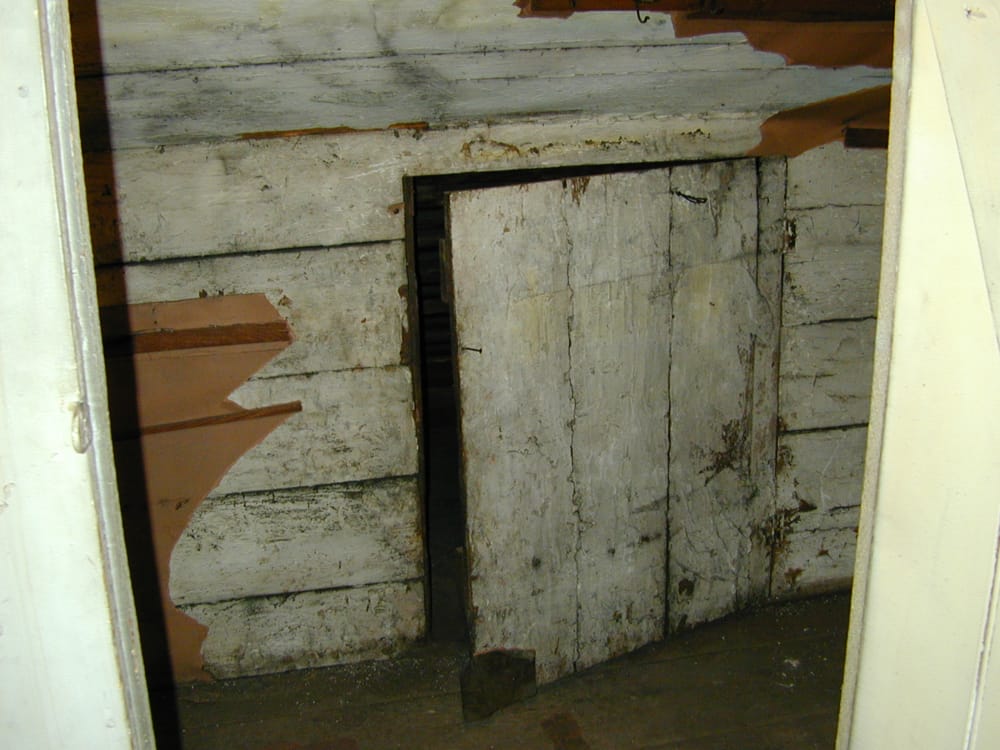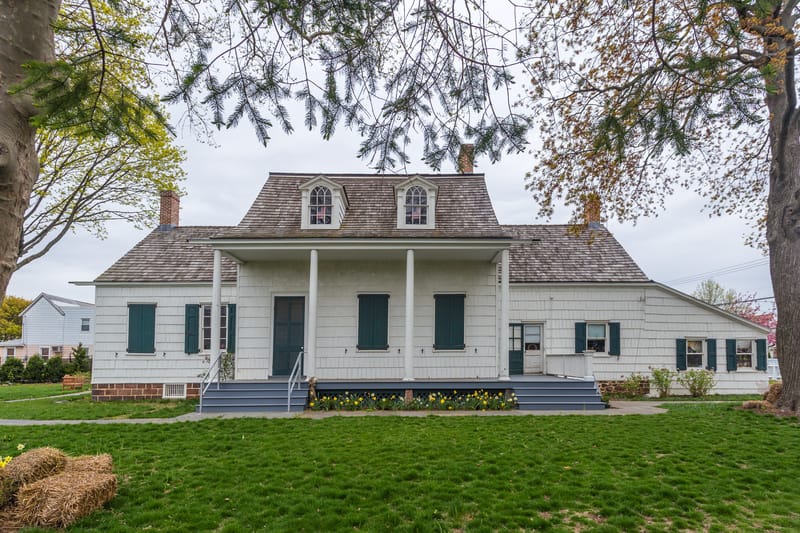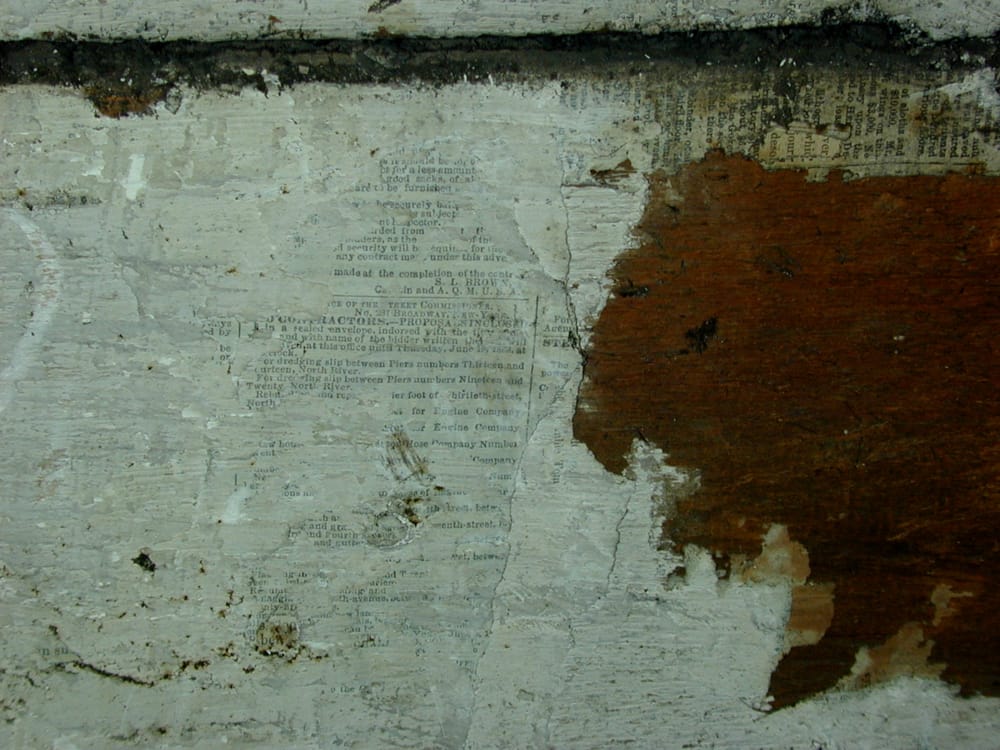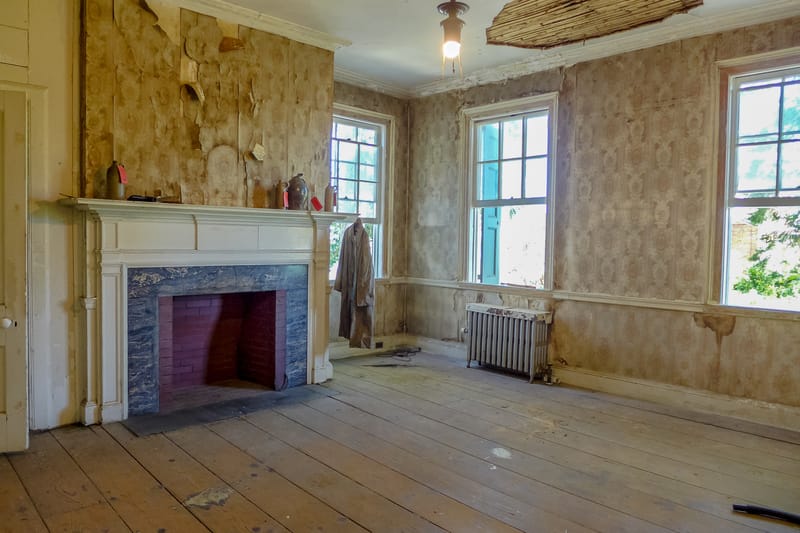Last Chance to Catch NYC's Holiday Notalgia Train
We met the voices of the NYC subway on our nostalgia ride this weekend!

Get an exclusive look inside the Lott House, one of the oldest buildings in Brooklyn!

Generations of Lott descendants heard stories about the "closet within a closet," a hidden space just off a second-floor bedroom at the historic Lott House in Marine Park, Brooklyn. This Dutch-American farmhouse was originally built by Colonel Johannes H. Lott in 1720, making it one of the oldest structures in Brooklyn. Over the past three centuries, generations of Lotts expanded the home to what we see today. According to family tradition, freedom seekers took refuge in the second-floor hideaway while traveling north on the Underground Railroad. This room, and artifacts found in another hidden space of the home, reveal the site's complicated history with slavery and abolition.

Peek inside the "closest within a closest" and more historic rooms of the Lott House on our upcoming virtual tour on November 7th! This livestream will give an inside look at spaces temporarily closed to the public while the home is under renovation. This virtual tour is free for all members at the Fan tier or higher. Not a member yet? Join today and get 10 days free!

Walk through one of the oldest buildings in Brooklyn, currently closed for restoration!
The original Lott home built by Colonel Johannes H. Lott sat on a 220-acre farm property along Gerritsen’s Creek. The land passed to Lott's sons in 1775. According to the will of the Colonel's son Johannes, there were twelve enslaved people on the property at the end of the 18th century.
In 1999, a team from Brooklyn College Archeological Research Center led by Alyssa Loorya (current President of the Friends of the Lott House), Chris Ricciardi, and H. Arthur Bankoff, found evidence of slave quarters inside the home. Pushing open a door in the ceiling of the lean-to section of the house, the oldest part, the team climbed up into a windowless garret room.
Beneath the floorboards of this cramped space, they found ritual objects including corncobs, a spirit cache, and a child's shoe. The corncobs, with kernels still intact, were placed in a formation reminiscent of a Bokongo cosmogram, a West African symbol. Inside the spirit cache, a pouch tied with hemp string, there was a pelvis bone of a sheep or goat and an oyster shell.

In 1800, Hendrick Lott inherited the property and its enslaved people from his father. That is when the home's relation to slavery began to change. Hendrick freed the enslaved people on the farm—over a decade before slavery was abolished in New York State—and kept them on as paid workers. Manumission slips show that Hendrick freed a 21-year-old man named Sam in 1801, a woman named Jude in 1807, and, in 1816, a man named Joseph and a woman named Susan. Later, Hendrick's son sold land to three Black men: Anthony Moore, William Paupaw, and John Johnson.
Many sites in Brooklyn have been recognized as part of the Underground Railroad network, and actions like Hendrick's and his son's give credibility to family stories of the "closet within a closet." Other bits of circumstantial evidence also support these claims. For one, the home was in a strategic location for freedom seekers.

As Mary Tsaltas-Ottomanelli, Executive Director of Friends of the Lott House, explained, the home's proximity to Gerritsen's Creek made it easily accessible to boats coming up the eastern shoreline. It was also near two major roads (Flatbush Road and Kings Highway) leading to the free African American community at Weeksville in current-day Crown Heights. Lastly, the remote property was far from the reach of bounty hunters in Manhattan. The Lotts were also congregants of the Dutch Reformed Church, an institution that supported abolition.
Today, the Lott house is recognized as a historic site along New York State's Underground Railroad Heritage Trail. Through physical artifacts and oral histories, this one site illustrates the great change that Brooklyn has undergone from the early 18th century through the late 20th century. The last direct Lott descendant, Ella Suydam, occupied the home until 1989. New York City purchased the property from her estate in 2002, and it has since operated as a house museum. Today, the Lott House is closed to the public as work begins on a major interior restoration project.

⭐ Untapped New York Members at the Insider tier and higher can join for just $20!
Subscribe to our newsletter